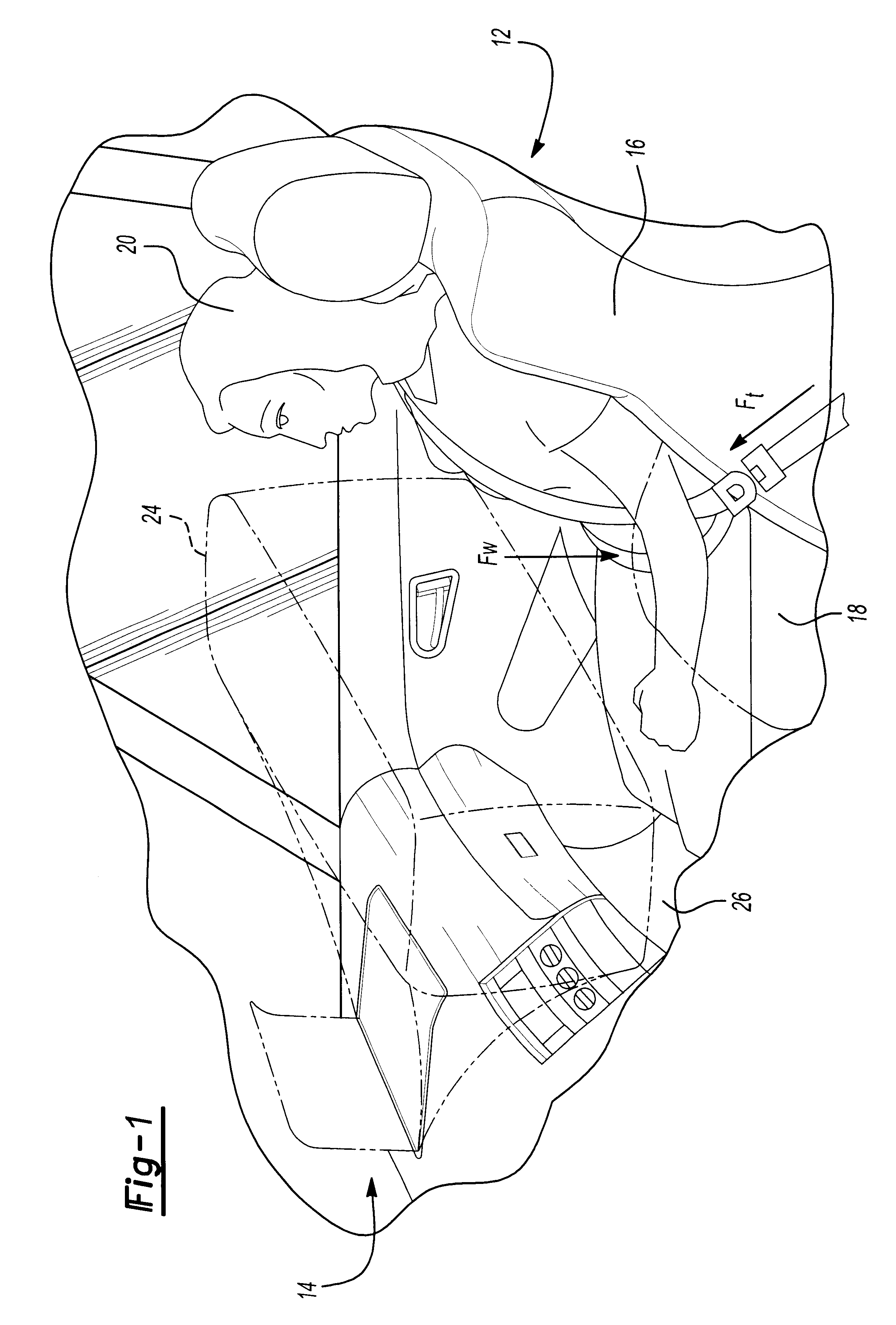Weight classification system
a classification system and weight technology, applied in the field of weight classification system, can solve the problems of complex and expensive current systems for measuring the weight of seat occupants, affecting the identification of adult, child, or car seat,
- Summary
- Abstract
- Description
- Claims
- Application Information
AI Technical Summary
Problems solved by technology
Method used
Image
Examples
Embodiment Construction
A vehicle includes a vehicle seat assembly, shown generally at 12 in FIG. 1, and an airbag system 14. The seat assembly 12 includes a seat back 16 and a seat bottom 18. A vehicle occupant 20 is secured to the seat 12 with a seat belt assembly 22. The vehicle occupant 20 can be an adult, child, or infant in a car seat secured to the seat 12 with the seat belt 22. A tension force Ft is exerted on the seat belt 22 that represents the force is exerted against the occupant 20 as the belt is tightened. The occupant 20 also exerts a vertical weight force Fw against the seat bottom 18. The subject weight classification system measures the tension force Ft and the weight force Fw, determines the seat occupant weight and center of gravity, and classifies the seat occupant. The classification information is used to control deployment of a safety device, such as an airbag 24.
The airbag system 14 deploys the airbag 24 under certain collision conditions. The deployment force for the airbag 24, sh...
PUM
| Property | Measurement | Unit |
|---|---|---|
| weight | aaaaa | aaaaa |
| weight | aaaaa | aaaaa |
| weight | aaaaa | aaaaa |
Abstract
Description
Claims
Application Information
 Login to View More
Login to View More - R&D
- Intellectual Property
- Life Sciences
- Materials
- Tech Scout
- Unparalleled Data Quality
- Higher Quality Content
- 60% Fewer Hallucinations
Browse by: Latest US Patents, China's latest patents, Technical Efficacy Thesaurus, Application Domain, Technology Topic, Popular Technical Reports.
© 2025 PatSnap. All rights reserved.Legal|Privacy policy|Modern Slavery Act Transparency Statement|Sitemap|About US| Contact US: help@patsnap.com



